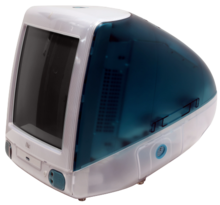Correct Use
- Camel case is when compound words or phrases are written without spaces or punctuations. Instead, each separate word is indicated by using either lowercase or uppercase (e.g., PlayStation).
- The formal name of camel case is medial capitals, but it has a few synonyms, like “camel caps,” “InterCaps,” and “Humpback” notation.
- Although camel case is popular today among many companies, the first use goes back to 1813 in chemical formulas.
When learning to write English, one of the first things taught is which letters and types of words get capitalized. You learn about lowercase and uppercase. But what is camel case? If you don’t know what that is, don’t worry. We’re going to give you a brief review of its history, explain what it is, and provide a few of the most famous cases of camel casing.

What Is Camel Case?
Camel case is when a compound word or phrase has no spaces or punctuation. Instead, each separate word is indicated with either a lowercase or uppercase letter. Several companies use camel case in their names or for their products and systems. A few examples are:
FedEx, PlayStation, PayPal, MasterCard, PowerPoint
The formal name for camel case is “medial capitals.” In 1813, a Swedish chemist named Jacob Berzelius used it to make it easier to write and identify chemicals, which until that time required the use of numerous naming and symbol conventions.
During the early 20th century, some companies started incorporating camel case into their names (e.g., DryIce Corporation, CinemaScope, VistaVision). But it didn’t become mainstream until various computer programming languages started adopting its use as an alternative name convention for multi-word identifiers. There are different variations, like BumpyCaps and camelBack.
Camel case is used in several languages for many reasons. It’s also used in many acronyms and abbreviations (e.g., PhD). One company uses camel case in many of their products and software—Apple.
Camel Case in Apple Products
The first product Apple launched that used camel case was technically the Apple QuickTake 100. However, this attempt in the digital camera sphere was short-lived. They then launched the iMac G3, which made Apple a household name.

Then, in 2001, Apple launched the iPod, which changed the course of the company forever. Here are a few more Apple products and systems that use camel case:
AirPods, iPad, iPadOS, iPhone, MacBook, iOS
Camel case has been around for a long time. Several countries from around the world use it for many reasons. Companies and corporations use it, too. And if you’re not familiar with their products, you may get the capitalization wrong. Luckily, LanguageTool can correct words that aren’t capitalized correctly, even those that are supposed to be camel case. Additionally, this intuitive text editor also corrects spelling and grammar mistakes and easily provides synonyms to strengthen your writing.


